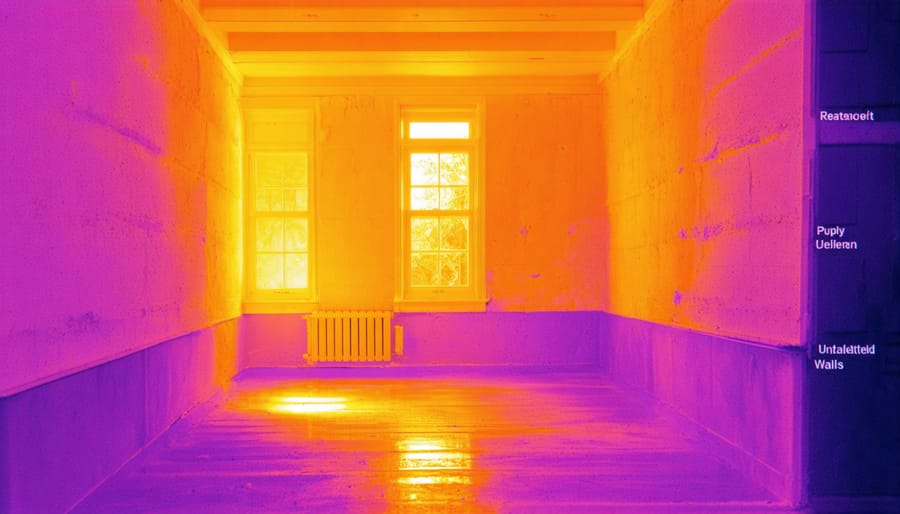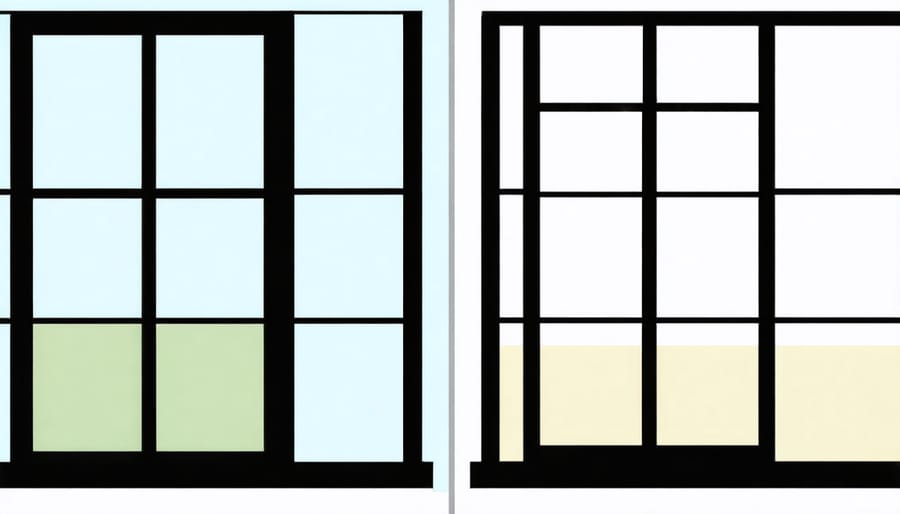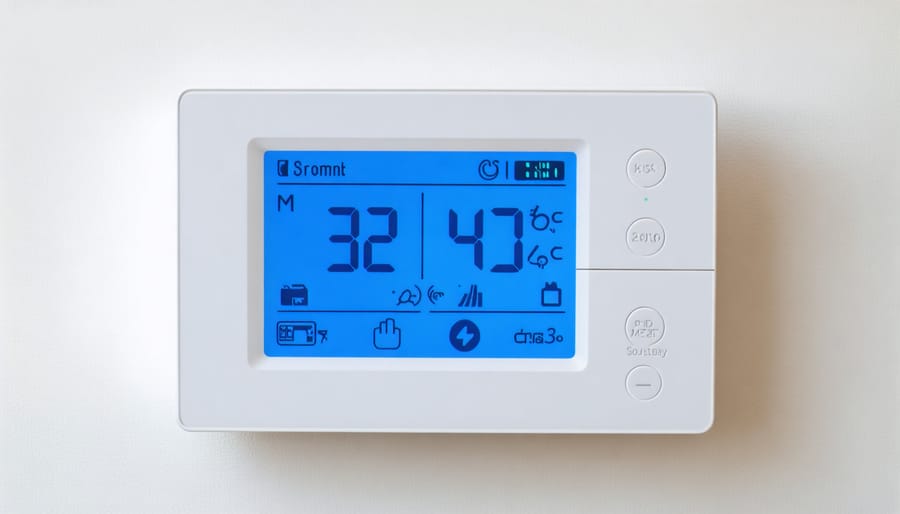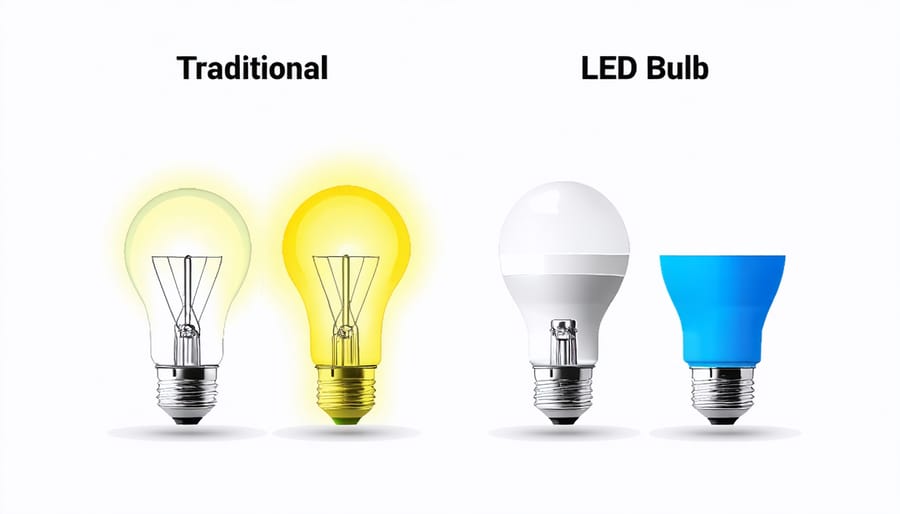Transform your home into an energy-efficient sanctuary with strategic upgrades that deliver lasting returns. Modern eco-friendly renovation strategies can slash utility bills by 30-50% while enhancing comfort and property value. Start with a professional energy audit to identify key improvement areas, then tackle high-impact projects like sealing air leaks, upgrading insulation, and installing smart climate controls. Whether you’re planning a complete home overhaul or targeting specific improvements, energy-efficient remodeling represents a smart investment that pays dividends through reduced energy costs, improved indoor comfort, and a smaller carbon footprint. The latest advancements in sustainable building materials and smart home technology make it easier than ever to create an efficient, comfortable living space without compromising on style or functionality.
High-Impact Insulation Upgrades

Wall and Attic Insulation Solutions
Proper insulation is one of the most cost-effective ways to boost your home’s energy efficiency. Today’s modern insulation materials offer impressive performance while being more eco-friendly than ever before.
For walls, fiberglass batts remain a popular choice, offering good R-value at an affordable price point. However, blown-in cellulose has gained traction for its superior air-sealing properties and use of recycled materials. For existing walls, injection foam insulation can be added through small holes, providing excellent coverage without major demolition.
In attics, loose-fill fiberglass or cellulose creates a thick, consistent barrier against heat loss. Spray foam insulation, while pricier, offers outstanding air-sealing capabilities and can reduce energy costs by up to 30%. For maximum effectiveness, aim for R-30 to R-60 in attics, depending on your climate zone.
Don’t forget about rim joists and attic hatches – these often-overlooked areas can be major sources of heat loss. Use rigid foam board or spray foam for rim joists, and add weatherstripping and rigid foam to attic hatches.
Before starting any insulation project, address any moisture issues and ensure proper ventilation. When in doubt, consult a professional to determine the best insulation strategy for your specific home and climate conditions. Remember, proper installation is just as important as choosing the right material.
Sealing Air Leaks and Weather Stripping
One of the most cost-effective ways to boost your home’s energy efficiency is by tackling air leaks and improving weather stripping. These silent energy thieves can account for up to 30% of your heating and cooling costs, but fortunately, they’re relatively easy to fix.
Start by conducting a simple DIY energy audit: on a windy day, hold a lit incense stick near common leak points like window frames, door edges, and electrical outlets. If the smoke wavers, you’ve found a leak. Common problem areas include:
• Door and window frames
• Electrical outlets and switch plates
• Baseboards and crown molding
• Cable and utility entry points
• Attic hatches
• Fireplace dampers
For small gaps and cracks, apply caulk appropriate for the surface material. Larger openings might require expanding foam sealant. When it comes to doors and windows, install quality weather stripping – look for durable materials like vinyl, metal, or silicone that can withstand frequent use.
Pro tip: Don’t forget to check your attic and basement. These areas often harbor significant air leaks that affect your entire home’s efficiency. Pay special attention to where walls meet the ceiling and floor, and around any pipes or vents.
Remember to replace worn weather stripping every few years, as it can become compressed or damaged over time. This simple maintenance routine can lead to significant energy savings throughout the year.
Energy-Smart Window Renovations
Double-Pane vs Triple-Pane Options
When it comes to energy-efficient windows, the choice between double-pane and triple-pane options can significantly impact your home’s comfort and energy bills. Double-pane windows, featuring two glass panels with an insulating gas between them, offer considerable improvement over single-pane windows, reducing heat loss by up to 50%.
Triple-pane windows take this efficiency a step further by adding a third layer of glass and two insulating gas chambers. While they cost about 10-15% more than double-pane windows, they provide superior insulation and can reduce energy loss by an additional 25-30% compared to double-pane options.
Consider your climate when making this choice. If you live in an area with extreme temperatures or high energy costs, triple-pane windows might be worth the investment. The extra insulation not only helps with temperature control but also reduces outside noise and condensation.
However, double-pane windows remain an excellent choice for moderate climates and budget-conscious homeowners. They offer a great balance of energy efficiency and cost-effectiveness, with most homeowners seeing a return on investment through reduced energy bills within 5-10 years.
Both options come with various glass coatings and gas-fill choices, so work with a qualified contractor to select the best combination for your specific needs and climate zone. Remember that proper installation is just as important as the window type you choose.

Smart Window Treatments
Smart window treatments are a game-changer when it comes to managing your home’s energy efficiency. These versatile solutions can help you save up to 15% on your energy bills while adding style to your living spaces. Let’s explore some effective options that work year-round.
Cellular shades, also known as honeycomb shades, are among the most energy-efficient window treatments available. Their unique honeycomb design creates air pockets that act as insulators, keeping warm air inside during winter and hot air outside during summer. For maximum effectiveness, choose double-cell shades in light colors.
Thermal curtains offer another excellent solution, especially for older windows. These heavy-duty curtains feature multiple layers of fabric and often include a thermal backing. For best results, hang them close to the window and let them extend beyond the frame on all sides. During winter, close them at night to retain heat, and open them during sunny days to harness natural warmth.
Exterior options like solar screens and awnings can block up to 70% of solar heat before it reaches your windows. These are particularly effective for south and west-facing windows that receive direct sunlight. For a budget-friendly alternative, consider window films that reflect heat while still allowing natural light to enter your space.
Remember to adjust your window treatments with the seasons and time of day to maximize their energy-saving potential. The right combination of smart window treatments can significantly improve your home’s comfort while reducing energy costs.
HVAC System Modernization
High-Efficiency Systems
Modern HVAC systems have come a long way in maximizing energy efficiency while keeping your home comfortable year-round. One of the most significant upgrades you can make is installing a smart thermostat, which learns your schedule and automatically adjusts temperatures to optimize energy usage. These devices can reduce your heating and cooling costs by up to 15% annually.
Heat pumps are another game-changing option, offering both heating and cooling capabilities in a single system. They work by transferring heat between indoor and outdoor air, using significantly less energy than traditional furnaces and air conditioners. In moderate climates, heat pumps can reduce electricity use for heating by approximately 50% compared to electric resistance heating.
Zone-based HVAC systems allow you to control temperatures in different areas of your home independently. This means you’re not wasting energy heating or cooling unused rooms, and everyone can customize their comfort levels. When combined with smart vents, these systems can reduce your energy consumption by up to 30%.
Regular maintenance is crucial for any HVAC system to perform at its best. Consider scheduling bi-annual professional check-ups and replacing air filters monthly. Also, look for systems with high SEER ratings (Seasonal Energy Efficiency Ratio) – the higher the rating, the more efficient the system.
For maximum efficiency, pair your HVAC upgrades with proper insulation and air sealing. This combination ensures your new system isn’t working overtime to compensate for air leaks or poor insulation. Remember to check for Energy Star certification when selecting new equipment – these models meet strict energy efficiency guidelines set by the EPA.
Smart Thermostats and Zoning
Smart thermostats and zoning systems represent one of the most impactful smart home technology innovations for energy efficiency. These intelligent systems go beyond simple temperature control, learning your preferences and automatically adjusting to optimize both comfort and energy savings.
With smart thermostats, you can create customized schedules that align with your daily routines, ensuring your home is comfortable when you need it to be while saving energy when you don’t. Many models offer smartphone control, allowing you to adjust settings remotely and receive energy usage reports that help you make informed decisions about your heating and cooling habits.
Zoning takes this efficiency a step further by dividing your home into separate temperature-controlled areas. Instead of heating or cooling your entire house to the same temperature, you can maintain different comfort levels in different zones. This means you can keep your bedroom cool at night while avoiding unnecessary conditioning in unused spaces, potentially reducing your energy bills by 20% or more.
Installation is straightforward for most smart thermostats, often requiring just a few basic tools and about an hour of your time. However, zoning systems typically need professional installation, especially if you’re retrofitting an existing HVAC system. The investment pays off through reduced energy consumption and increased comfort, with most homeowners reporting noticeable savings within the first few months of use.
Consider starting with a smart thermostat and gradually expanding to a zoned system as your budget allows. Look for Energy Star certified devices to ensure you’re getting the most efficient technology available.

Lighting and Appliance Updates

LED Lighting Solutions
LED lighting has revolutionized home illumination, offering an incredible blend of energy efficiency and versatility. These modern fixtures use up to 75% less energy than traditional bulbs while lasting up to 25 times longer, making them a smart investment for any energy-conscious homeowner.
When upgrading to LED lighting, start with high-use areas like your kitchen, living room, and outdoor security lights. Look for bulbs with a color temperature between 2700K and 3000K for warm, inviting spaces, or 4000K for task-oriented areas like home offices and garages. The higher initial cost of LED bulbs is quickly offset by lower energy bills and reduced replacement frequency.
Consider installing dimmer switches compatible with LED bulbs to create flexible lighting schemes and save even more energy. Smart LED bulbs can be controlled through your phone or voice commands, allowing you to adjust brightness levels and even change colors to suit different moods or activities.
For maximum efficiency, pair your LED lights with motion sensors in less frequently used spaces like hallways and closets. When installing recessed lighting, choose IC-rated LED fixtures that can safely contact insulation. Don’t forget about under-cabinet lighting in kitchens and task lighting in workspaces – LED strips are perfect for these applications and installation is typically straightforward.
Remember to check for ENERGY STAR certification when purchasing LED bulbs to ensure you’re getting a quality product that meets strict efficiency guidelines.
Energy Star Appliance Integration
When it comes to cost-effective home updates, Energy Star appliances are your best allies in the battle against high utility bills. These certified appliances typically use 10-50% less energy than their standard counterparts, making them an excellent investment for your home.
Start by identifying which appliances in your home are the biggest energy consumers. Refrigerators, washing machines, and dishwashers are usually the top culprits. When shopping for replacements, look for the distinctive blue Energy Star label and compare the yellow EnergyGuide labels to understand annual operating costs.
For maximum efficiency, consider these smart installation tips:
– Position your refrigerator away from heat sources like ovens or sunny windows
– Install your dishwasher close to hot water lines to minimize heat loss
– Ensure proper ventilation around all appliances
– Level your washing machine to prevent unnecessary strain on components
Many utility companies offer rebates for Energy Star appliance installations, so check local programs before making your purchase. Some areas even provide free removal of old appliances, making the transition even smoother.
Remember to properly maintain your new appliances by regularly cleaning filters, checking seals, and following manufacturer guidelines. This attention to detail will help ensure your energy-efficient appliances perform at their best for years to come.
Water Conservation Features
Low-Flow Fixtures
When it comes to water conservation, low-flow fixtures are a game-changer in sustainable bathroom renovations. These modern fixtures can reduce your water consumption by up to 50% without compromising performance, making them an excellent choice for eco-conscious homeowners.
Start with your faucets – installing aerators or replacing old fixtures with WaterSense-certified models can save thousands of gallons annually. Today’s low-flow faucets mix air with water to maintain pressure while using less water, giving you the same washing power you’re used to.
Upgrading to a low-flow showerhead is another smart move. Modern designs offer multiple spray patterns and maintain satisfying pressure while using just 1.5 gallons per minute – half of what older models use. Look for models with pause features, which let you temporarily stop water flow while lathering up.
Don’t forget about toilets! Dual-flush models give you options for different flush volumes, while pressure-assisted toilets use less water but pack more punch. The latest models use as little as 1.28 gallons per flush, compared to older toilets that use up to 6 gallons.
These upgrades are typically DIY-friendly and pay for themselves through reduced water bills. Plus, many local utilities offer rebates for installing water-efficient fixtures, making the switch even more affordable.
Hot Water System Efficiency
Your hot water system can account for up to 20% of your home’s energy consumption, making it a prime target for efficiency improvements. Start with simple fixes like insulating your water heater and pipes – this affordable upgrade can reduce heat loss by 25-45% and pay for itself within a year.
Consider adjusting your water heater temperature to 120°F (49°C), which is plenty hot for most household needs while being more energy-efficient and safer. If your current water heater is over 10 years old, upgrading to a new energy-efficient model could slash your water heating costs by 50% or more.
For maximum savings, explore tankless water heaters, which heat water on demand instead of maintaining a large tank of hot water. While the upfront cost is higher, they can reduce energy use by 30% compared to traditional tanks and last nearly twice as long.
Solar water heaters are another excellent option, especially in sunny climates. Though installation costs are significant, they can provide up to 80% of your hot water needs for free once installed, with most systems paying for themselves within 4-8 years.
Don’t forget about daily habits – using cold water for laundry when possible, fixing leaky faucets promptly, and installing low-flow fixtures can all contribute to significant water and energy savings over time.
Transforming your home into an energy-efficient haven is more than just a trend – it’s a smart investment in your future comfort and financial well-being. By implementing the energy-saving measures we’ve discussed, you can significantly reduce your utility bills while increasing your home’s value and comfort level.
Remember, you don’t need to tackle everything at once. Start with simple upgrades like LED lighting and weatherstripping, then gradually work your way up to larger projects such as insulation improvements or HVAC system upgrades. Every small change contributes to the bigger picture of energy efficiency.
The benefits of energy-efficient remodeling extend beyond cost savings. You’ll enjoy a more comfortable living space, contribute to environmental sustainability, and potentially qualify for tax incentives or rebates. Plus, these improvements often pay for themselves through reduced energy costs over time.
Take the first step today by conducting a home energy audit or implementing one of the simpler upgrades we’ve covered. Consider consulting with energy efficiency experts for larger projects to ensure you’re making the most impactful improvements for your specific situation.
By investing in energy-efficient remodeling now, you’re not just upgrading your home – you’re creating a more sustainable, comfortable, and valuable living space for years to come. The time and effort you put into these improvements will reward you with long-term benefits that make it all worthwhile.
